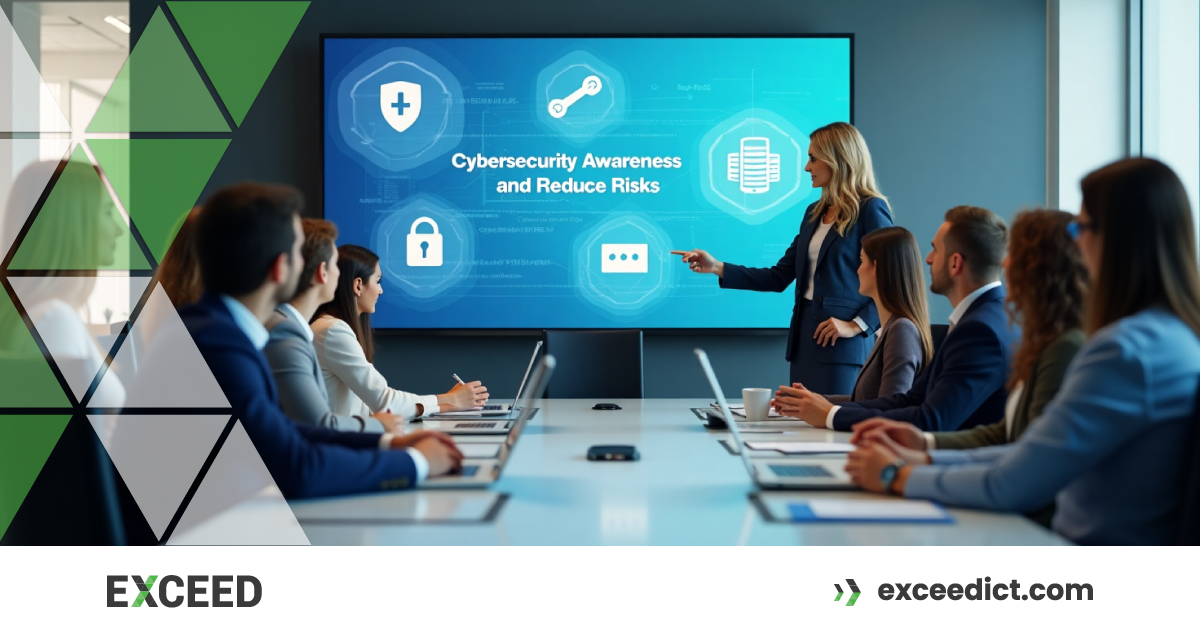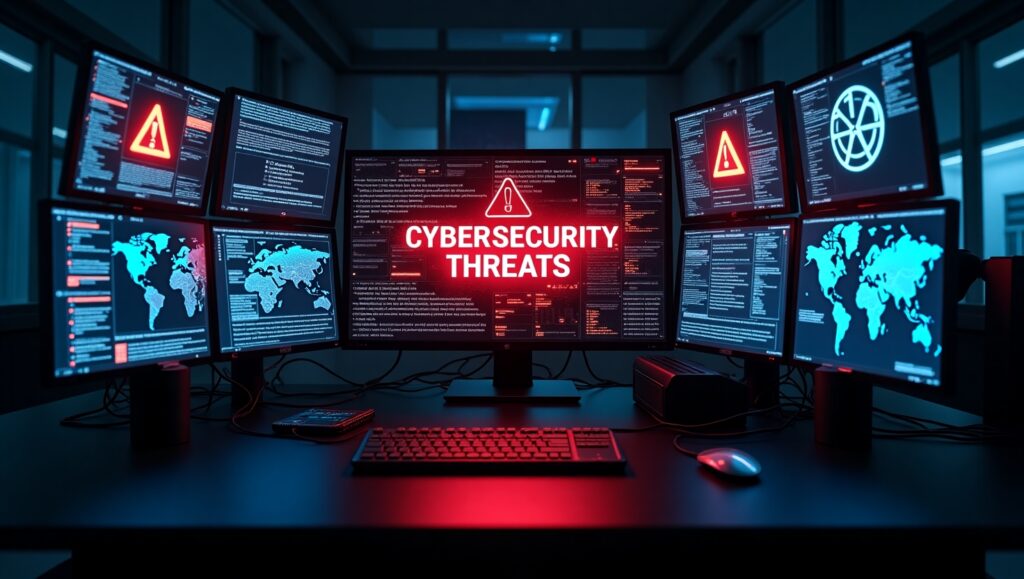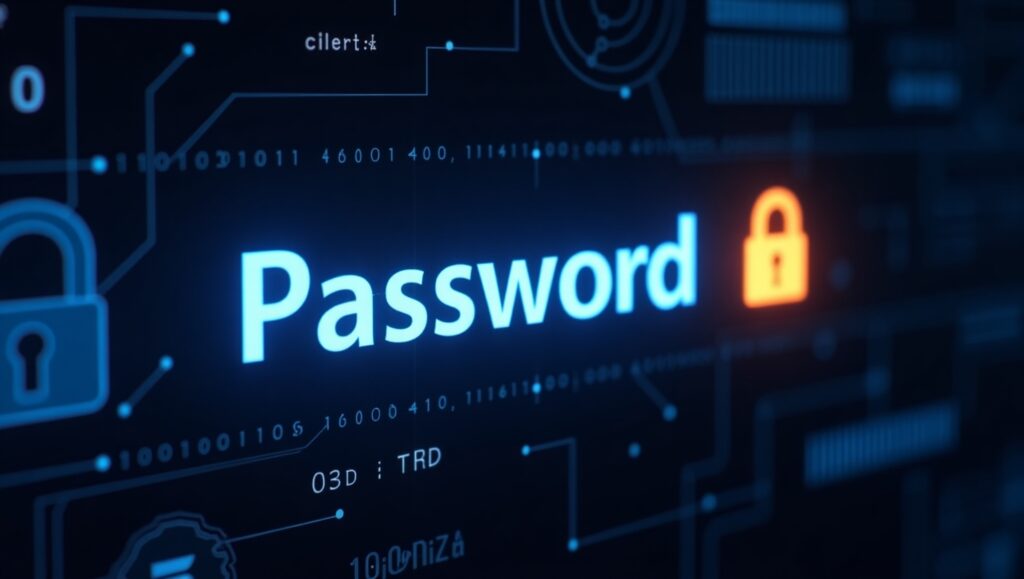
In an increasingly digital world, cybersecurity is no longer just a concern for IT professionals—it’s a shared responsibility that affects everyone. Whether you’re working in an office, running a small business, or browsing online at home, understanding how to recognise and avoid cyber threats is crucial. One of the most effective ways to minimise the risk of cyber incidents is by improving your cyber security awareness.
This article outlines what cybersecurity awareness entails, why it matters, and practical steps you can take to protect yourself and your organisation.
Understanding Cybersecurity Threats

Cyber threats are diverse and constantly evolving. The first step to improving cybersecurity awareness is understanding what you’re up against. Some of the most common threats include:
Phishing
Phishing involves fraudulent emails or messages designed to trick individuals into revealing sensitive information, such as passwords or credit card details. These messages often appear to be from trusted sources like banks, government bodies, or popular service providers.
Malware
Malware (malicious software) refers to programs designed to damage or disrupt computer systems. This includes viruses, trojans, spyware, and ransomware. Malware can be delivered through infected email attachments, compromised websites, or malicious downloads.
Social Engineering
Social engineering is the use of psychological manipulation to trick people into giving away confidential information or access. It relies on human error rather than technical flaws, making awareness critical to prevention.
Ransomware
Ransomware locks users out of their systems or encrypts their data until a ransom is paid. These attacks can severely disrupt business operations and lead to significant financial losses.
Recognising and Avoiding Threats
The ability to spot suspicious activity is a key part of cybersecurity awareness. Here are some practical ways to avoid falling victim:
-
Be wary of unsolicited emails, especially those requesting urgent action or containing unexpected attachments.
-
Check URLs carefully before clicking—phishing sites often use slightly altered domain names to imitate legitimate websites.
-
Don’t disclose personal or financial information over email or social media.
-
Verify communication sources by contacting the sender through official channels.
Practising Safe Online Behaviour
Consistently practising good cyber hygiene can significantly reduce your risk of falling victim to an attack.
Use Strong Passwords

Create unique passwords for each account, ideally using a mix of letters, numbers, and symbols. Avoid common words or easily guessable information like birthdays.
Enable Multi-Factor Authentication (MFA)
MFA adds an extra layer of security by requiring a second form of verification, such as a code sent to your mobile device.
Keep Software Up-to-Date
Outdated software can contain vulnerabilities that cybercriminals exploit. Regularly update your operating system, apps, and antivirus programs.
Be Cautious with Public Wi-Fi
Avoid conducting sensitive activities such as online banking when using public Wi-Fi networks. If necessary, use a virtual private network (VPN) for added security.
Protecting Sensitive Information
Understanding the value of personal and organisational data is essential. Cybercriminals often target:
-
Personal identification details (e.g., driver’s licence numbers, Medicare cards)
-
Financial information
-
Customer and employee records
-
Intellectual property
Store data securely using encryption where appropriate, limit access to sensitive information, and avoid oversharing personal details online.
Reporting Incidents Promptly
If you suspect you’ve received a phishing email or your device has been compromised, report it immediately. Most organisations have internal procedures for reporting security incidents. In Australia, the Australian Cyber Security Centre (ACSC) allows individuals and businesses to report cybercrime via ReportCyber.
Timely reporting helps limit damage, contain breaches, and protect others from similar attacks.
The Importance of a Cyber-Aware Culture
Cybersecurity awareness shouldn’t be a one-off training session—it needs to be embedded in your organisation’s culture.
-
Encourage staff to speak up if they spot something suspicious.
-
Reward vigilance and create a no-blame environment where reporting errors or threats is supported.
-
Regularly communicate updates on cyber threats, especially as tactics change over time.
Leaders and managers should model secure behaviour and emphasise the importance of collective responsibility.
How to Improve Cybersecurity Awareness?
Implement Ongoing Training
Organisations should conduct regular training sessions that include:
-
Real-life examples of cyberattacks
-
Interactive phishing simulations
-
Updates on the latest threats and best practices
Training should be tailored to your industry and the roles of your employees.
Promote National Awareness Initiatives
Use opportunities like Cyber Security Awareness Month (October) to promote online safety, distribute educational material, and reinforce important messages.
Stay Informed
Cyber threats are constantly evolving. Subscribe to updates from reliable sources such as:
-
Australian Cyber Security Centre (ACSC)
-
Stay Smart Online
-
Office of the Australian Information Commissioner (OAIC)
By staying informed, you’ll be better prepared to anticipate and respond to emerging threats.
Conclusion
Cyber security awareness is one of the most effective ways to protect yourself and your organisation in the digital age. By understanding the types of threats, recognising warning signs, and practising secure behaviour, you become part of the frontline defence against cybercrime.
Whether you’re an individual, employee, or business owner, taking proactive steps to build your cyber knowledge will go a long way in reducing risks and promoting a safer online environment for everyone.
You may also like to know more about
- Cyber Attacks can Shut down Critical Infrastructure. It’s time to make Cyber Security Compulsory.
- Protect Your Data with Mobile Data Security Measures.
- How to Secure Business with Mobile Security Solutions.
- What is a Cyber Attack ? News, trends, Examples in Australia
Stay connected with EXCEED ICT
Stay connected with EXCEED ICT by joining our social networks (given at footer). Get the latest updates, news, and tips for enterprise device deployment. Follow us on Twitter, Facebook, and LinkedIn for the best enterprise device deployment solutions.
Help us to improve our enterprise by rating us on Google Maps. Your feedback and comments are valuable to us and will be used to make our services even better.





